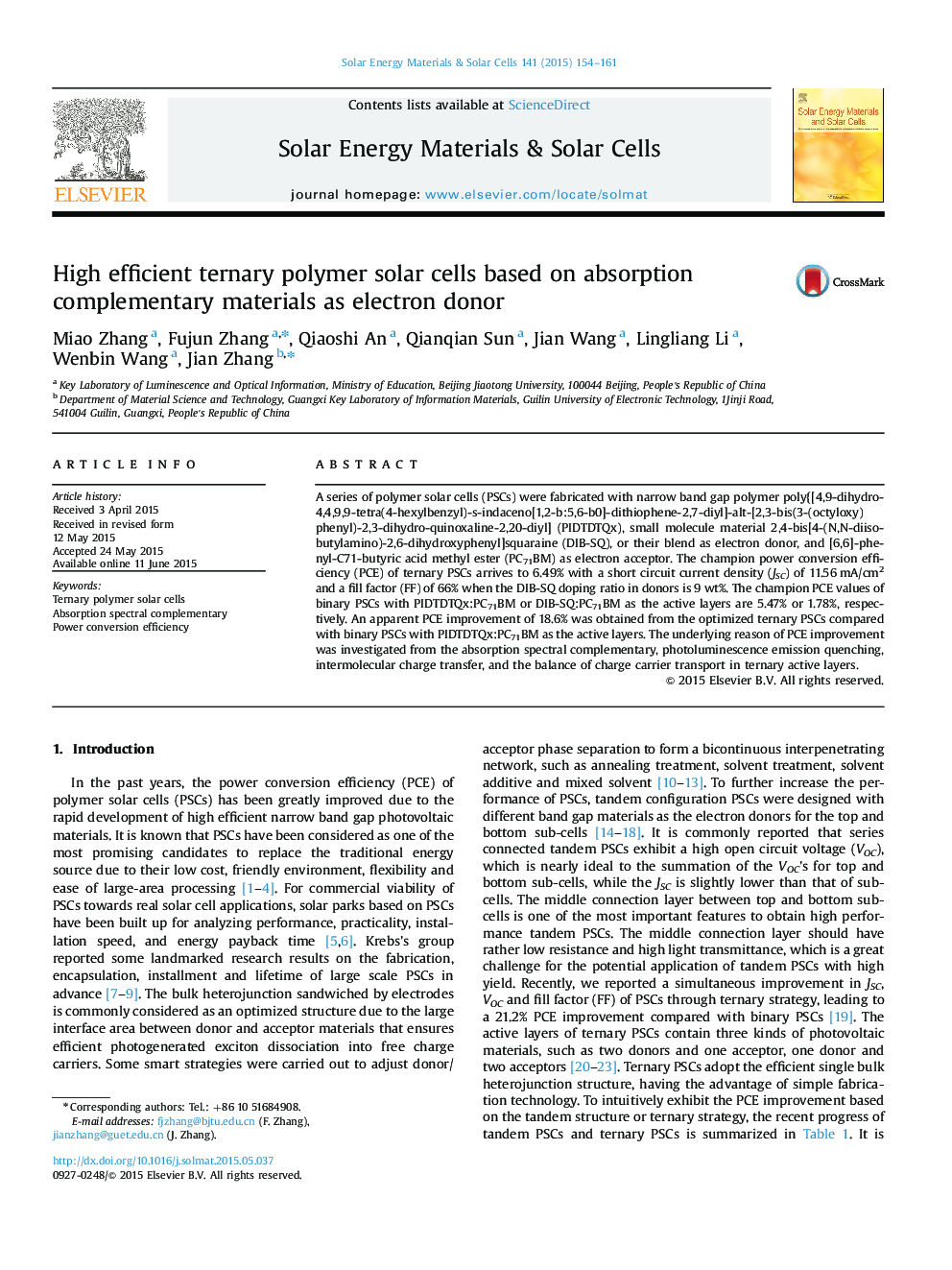| کد مقاله | کد نشریه | سال انتشار | مقاله انگلیسی | نسخه تمام متن |
|---|---|---|---|---|
| 77736 | 49298 | 2015 | 8 صفحه PDF | دانلود رایگان |
• The champion PCE of ternary solar cells was increased to 6.49%.
• Charge transfer between donors is beneficial to the photoelectric conversion.
• Photon harvesting, charge transport and collection were synergistically improved.
A series of polymer solar cells (PSCs) were fabricated with narrow band gap polymer poly{[4,9-dihydro-4,4,9,9-tetra(4-hexylbenzyl)-s-indaceno[1,2-b:5,6-b0]-dithiophene-2,7-diyl]-alt-[2,3-bis(3-(octyloxy)phenyl)-2,3-dihydro-quinoxaline-2,20-diyl] (PIDTDTQx), small molecule material 2,4-bis[4-(N,N-diisobutylamino)-2,6-dihydroxyphenyl]squaraine (DIB-SQ), or their blend as electron donor, and [6,6]-phenyl-C71-butyric acid methyl ester (PC71BM) as electron acceptor. The champion power conversion efficiency (PCE) of ternary PSCs arrives to 6.49% with a short circuit current density (JSC) of 11.56 mA/cm2 and a fill factor (FF) of 66% when the DIB-SQ doping ratio in donors is 9 wt%. The champion PCE values of binary PSCs with PIDTDTQx:PC71BM or DIB-SQ:PC71BM as the active layers are 5.47% or 1.78%, respectively. An apparent PCE improvement of 18.6% was obtained from the optimized ternary PSCs compared with binary PSCs with PIDTDTQx:PC71BM as the active layers. The underlying reason of PCE improvement was investigated from the absorption spectral complementary, photoluminescence emission quenching, intermolecular charge transfer, and the balance of charge carrier transport in ternary active layers.
Figure optionsDownload as PowerPoint slide
Journal: Solar Energy Materials and Solar Cells - Volume 141, October 2015, Pages 154–161
